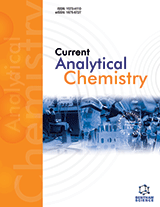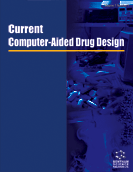摘要
在过去几年中,将含金属分子与生物分子,特别是肽的特征相结合的兴趣已经增加。已经设计了大量新的创新有机金属化合物以及有效的配位络合物,特别是在药物化学中,生物活性化合物的文库通过引入金属络合物过度膨胀。研究的重点是潜水员,不限于例如, 开发具有抗增殖或抗菌活性的治疗剂,或用于制药应用的新型生物传感器的设计。通过引进金属中心,可能会增加新的特性,可以帮助克服疾病难以治理的问题,同时打击出现耐药性的问题。然而,许多非常有效的金属络合物的应用受到限制,因为它们的水溶性差,空气稳定性和与细胞接触时的较差的吸收。在这种情况下,优化有希望的铅结构的一种可能性是将其与生物活性肽偶联。在本综述中,介绍了用于药物设计和未来药物应用的金属络合物 - 肽缀合物的概述。
关键词: 细胞穿透肽,抗菌肽,固相肽合成,有机金属配合物,抗癌治疗,生物传感器。
Current Medicinal Chemistry
Title:Metal Complex-Peptide Conjugates: How to Modulate Bioactivity of Metal-Containing Compounds by the Attachment to Peptides
Volume: 24 Issue: 17
关键词: 细胞穿透肽,抗菌肽,固相肽合成,有机金属配合物,抗癌治疗,生物传感器。
摘要: During the last years, the interest in combining the features of metal-containing molecules with biomolecules, particularly peptides, has been increased. Large series of new innovative organometallic compounds, as well as potent coordination complexes have been designed and, especially in medicinal chemistry, the library of bioactive compounds was excessively expanded by the introduction of metal complexes. The research foci are divers and not limited to e.g. the development of therapeutics with anti-proliferative or antibacterial activity, or the design of novel biosensors useful for pharmaceutical applications. By introduction of a metal centre, new attributes might be added that could help to overcome the problems of difficult to treat diseases, as well as to combat issues with arising drug resistances. However, the application of a number of very potent metal complexes is restricted owing to their poor water-solubility, air-stability and only poor uptake when in contact with cells. In this context, one possibility to optimize promising lead structures is to couple them to bioactive peptides. Within this review, an overview on metal complex-peptide conjugates used for drug design and future pharmaceutical application is presented.
Export Options
About this article
Cite this article as:
Metal Complex-Peptide Conjugates: How to Modulate Bioactivity of Metal-Containing Compounds by the Attachment to Peptides, Current Medicinal Chemistry 2017; 24 (17) . https://dx.doi.org/10.2174/0929867324666170505112836
| DOI https://dx.doi.org/10.2174/0929867324666170505112836 |
Print ISSN 0929-8673 |
| Publisher Name Bentham Science Publisher |
Online ISSN 1875-533X |
 49
49 11
11 1
1
- Author Guidelines
- Bentham Author Support Services (BASS)
- Graphical Abstracts
- Fabricating and Stating False Information
- Research Misconduct
- Post Publication Discussions and Corrections
- Publishing Ethics and Rectitude
- Increase Visibility of Your Article
- Archiving Policies
- Peer Review Workflow
- Order Your Article Before Print
- Promote Your Article
- Manuscript Transfer Facility
- Editorial Policies
- Allegations from Whistleblowers
- Announcements
Related Articles
-
Recent Developments in Receptor-Selective Retinoids
Current Pharmaceutical Design Ulcerative Colitis: Pathogenesis
Current Drug Targets Biomimetic Approaches Towards The Synthesis of Complex Dimeric Natural Products
Current Pharmaceutical Design FK506 Binding Proteins as Targets in Anticancer Therapy
Anti-Cancer Agents in Medicinal Chemistry p53 Peptide Prevents LITAF-Induced TNF-Alpha-Mediated Mouse Lung Lesions and Endotoxic Shock
Current Molecular Medicine Comparing High LET <sup>227</sup>Th- and Low LET <sup>177</sup>Lu-trastuzumab in Mice with HER-2 Positive SKBR-3 Xenografts
Current Radiopharmaceuticals Molecular Probing and Imaging of Histone Deacetylase Inhibitors in Cancer Treatment
Anti-Cancer Agents in Medicinal Chemistry Editorial [Hot Topic: Gold Derivatives as Anti-Cancer Agents (Guest Editor: Laura Rodriguez Raurell)]
Anti-Cancer Agents in Medicinal Chemistry Regulatory T Cell Counts and Development of Malignancy in Patients with HIV Infection
Current HIV Research Optimizing Target Selection and Development Strategy in Cancer Treatment; The Next Wave
Current Medicinal Chemistry - Anti-Cancer Agents Enhanced Free Radical Status of Cancer Cells Success and Failure of Prooxidant/Antioxidant Treatment
Current Signal Transduction Therapy Synthesis and Cytotoxic Properties of Halogen and Aryl-/Heteroarylpiperazinyl Derivatives of Benzofurans
Anti-Cancer Agents in Medicinal Chemistry Hypoxia and Oxidative Stress in the Pathogenesis of Gynecological Cancers and in Therapeutical Options
Current Cancer Therapy Reviews Structural Biology of Bacterial Secretion Systems in Gram-Negative Pathogens- Potential for New Drug Targets
Infectious Disorders - Drug Targets Carbohydrate and Glycoconjugate Analysis by Ion Mobility Mass Spectrometry: Opportunities and Challenges
Current Metabolomics The Potential for Substance P Antagonists as Anti-Cancer Agents in Brain Tumours
Recent Patents on CNS Drug Discovery (Discontinued) Transcription Factors: Molecular Targets for Prostate Cancer Intervention by Phytochemicals
Current Cancer Drug Targets Edelfosine: An Antitumor Drug Prototype
Anti-Cancer Agents in Medicinal Chemistry Integrating the Universe of Effector and Regulatory Immune Cell Subsets: An Emerging Role of Protein-Glycan Interactions
Current Immunology Reviews (Discontinued) Hemophagocytic Lymphohistiocytosis (HLH): An Update
Current Immunology Reviews (Discontinued)


























